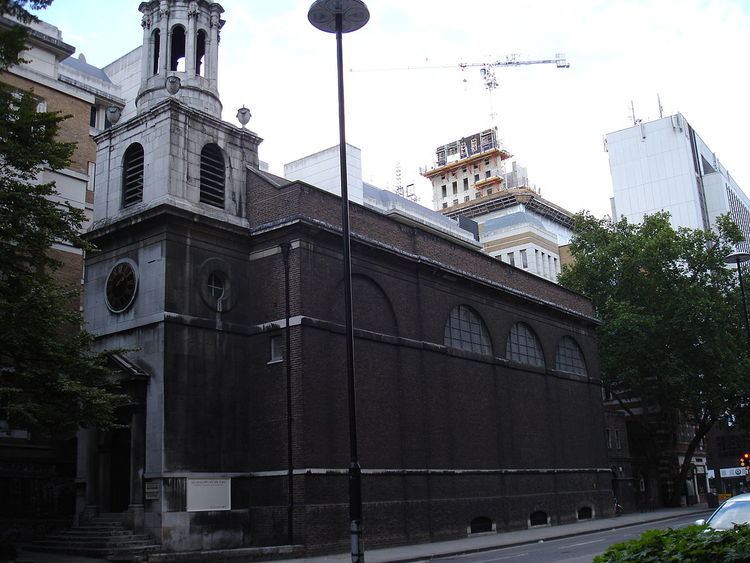Address London EC2M 5ND, UK | Denomination Anglican | |
 | ||
Similar All Hallows Staining, All Hallows Lombard Street, All‑Hallows‑the‑Less, All Hallows Honey Lane, St Andrew Hubbard | ||
All Hallows-on-the-Wall is a Church of England church located in the City of London. It is situated adjacent to London Wall, the former city wall, at Broad Street.
Contents
History
The present church was constructed by George Dance the Younger in 1767, replacing an earlier church built some time in the early 12th century on a bastion of the old Roman wall. It became renowned for its hermits, who lived in cells in the church. All Hallows escaped destruction in the Great Fire of London in 1666 due to its position under the wall, but subsequently fell into dereliction.
Dance rebuilt the church when he was only 24 years old. He had recently returned from Italy where he had conducted detailed studies of Classical buildings. The new All Hallows took its inspiration from the Classical world and was remarkably simple in form, with no aisles; its interior consists solely of a barrel-vaulted nave with a half-dome apse at the far end, with decoration deriving from the ancient Temple of Venus and Rome in the city of Rome. Attached Ionic columns support a frieze, rather than the usual entablature. The exterior is plain and of brick, except for the stone- faced tower above the porch at the west end.
The Church was noted for its work in offering its services to the poor: many workers, including women in domestic service, would take the early trains into the City to avoid peak fares. A demand for services and refreshment in the Parish led to the Vicar of the Church, the Reverend Sir Montague Fowler, 4th Baronet, third son of Sir John Fowler, to operate services for their benefit. This was a popular initiative (which also had tents constructed in the Churchyard to provide refreshments) which led to the construction of the buildings behind the Church which were to be used as an educational institute. This led to the Church to having one of the largest congregations in the City at a time when many City Churches were beginning to seem redundant.
All Hallows was damaged during the Second World War but was restored in the early 1960s. It is a guild church associated with the Worshipful Company of Carpenters, which has held its annual elections in the church for over 600 years. Until 1994, it was the headquarters of the Council for the Care of Churches. The church was designated a Grade I listed building on 4 January 1950.
It is now the home of the urban youth charity XLP, and City Gates Church, a congregation with roots in the British New Church Movement.
